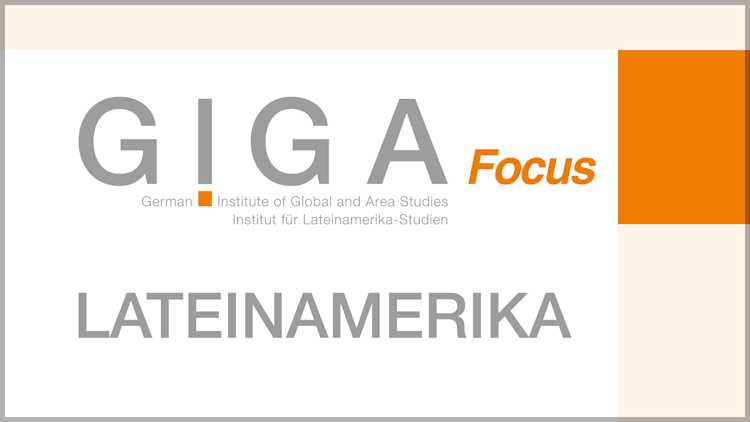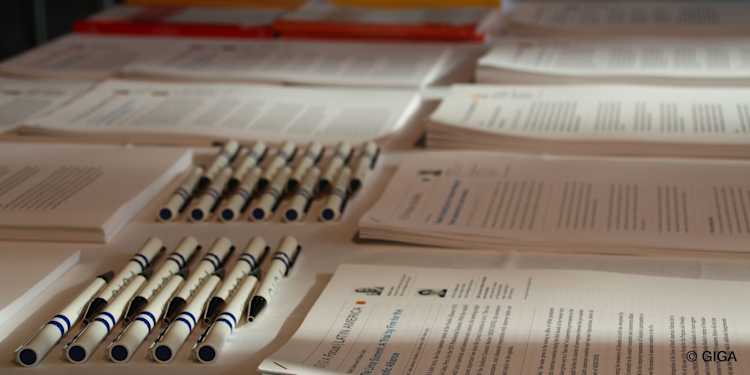- Startseite
- Publikationen
- GIGA Focus
- The Pacific Alliance Casts Its Cloud over Latin America
GIGA Focus International Edition English
The Pacific Alliance Casts Its Cloud over Latin America
Nummer 8 | 2013 | ISSN: 2196-3940
In a joint declaration on 8 October 2013, the presidents of the Pacific Alliance (PA) – an organisation legally constituted in 2012 that is comprised of Chile, Colombia, Peru and Mexico – announced the conclusion of trade negotiations to remove all tariff barriers between its member states, thus making it the eighth largest economy in the world. This new free trade agreement (FTA) has attracted the interest of states and business sectors around the world, including the German Business Association for Latin America, which will dedicate its Latin American Day conference in November 2013 to this new group.
Analysis
The PA will remove 92 percent of all trade tariffs by the end of 2013 and progressively lift the remaining 8 percent. Whereas financial markets and some of its protagonists depict the PA as the new star in Latin America, the Bolivarian Alliance for the Peoples of Our Americas (ALBA) and most of the countries of the Southern Common Market (Mercado Común del Sur – Mercosur) see the PA as a new attempt by the United States to undermine alternative patterns of regional integration in the Americas.
The PA is an economic alliance that revives the open regionalist model of the early 1990s in Latin America in that it seeks to increase intratrade and extraregional trade relationships with Asia, the United States and Europe; the PA states already haveFTAs with the United States and the European Union.
The positive view of the PA in Latin America and abroad is based on its economic potential. In fact, Australia, Canada, China, the Dominican Republic, Ecuador, El Salvador, France, Guatemala, Honduras, Japan, New Zealand, Portugal, Paraguay,South Korea, Spain, Turkey, the United States and Uruguay have already applied for and been granted observer status. Moreover, Costa Rica and Panama are on their way to becoming full members.
At the political level, however, the PA has created friction in the region as it brings Mexico into South America – an area seen by Brazil as its sphere of influence. Moreover, the PA countries have good relations with the United States and are in linewith its FTA agenda.
Fußnoten
Regionalinstitute
Forschungsschwerpunkte
Wie man diesen Artikel zitiert
Nolte, Detlef, und Leslie Wehner (2013), The Pacific Alliance Casts Its Cloud over Latin America, GIGA Focus International Edition English, 8, Hamburg: German Institute for Global and Area Studies (GIGA), http://nbn-resolving.de/urn:nbn:de:0168-ssoar-360988
Impressum
Der GIGA Focus ist eine Open-Access-Publikation. Sie kann kostenfrei im Internet gelesen und heruntergeladen werden unter www.giga-hamburg.de/de/publikationen/giga-focus und darf gemäß den Bedingungen der Creative-Commons-Lizenz Attribution-No Derivative Works 3.0 frei vervielfältigt, verbreitet und öffentlich zugänglich gemacht werden. Dies umfasst insbesondere: korrekte Angabe der Erstveröffentlichung als GIGA Focus, keine Bearbeitung oder Kürzung.
Das German Institute for Global and Area Studies (GIGA) – Leibniz-Institut für Globale und Regionale Studien in Hamburg gibt Focus-Reihen zu Afrika, Asien, Lateinamerika, Nahost und zu globalen Fragen heraus. Der GIGA Focus wird vom GIGA redaktionell gestaltet. Die vertretenen Auffassungen stellen die der Autorinnen und Autoren und nicht unbedingt die des Instituts dar. Die Verfassenden sind für den Inhalt ihrer Beiträge verantwortlich. Irrtümer und Auslassungen bleiben vorbehalten. Das GIGA und die Autorinnen und Autoren haften nicht für Richtigkeit und Vollständigkeit oder für Konsequenzen, die sich aus der Nutzung der bereitgestellten Informationen ergeben.






